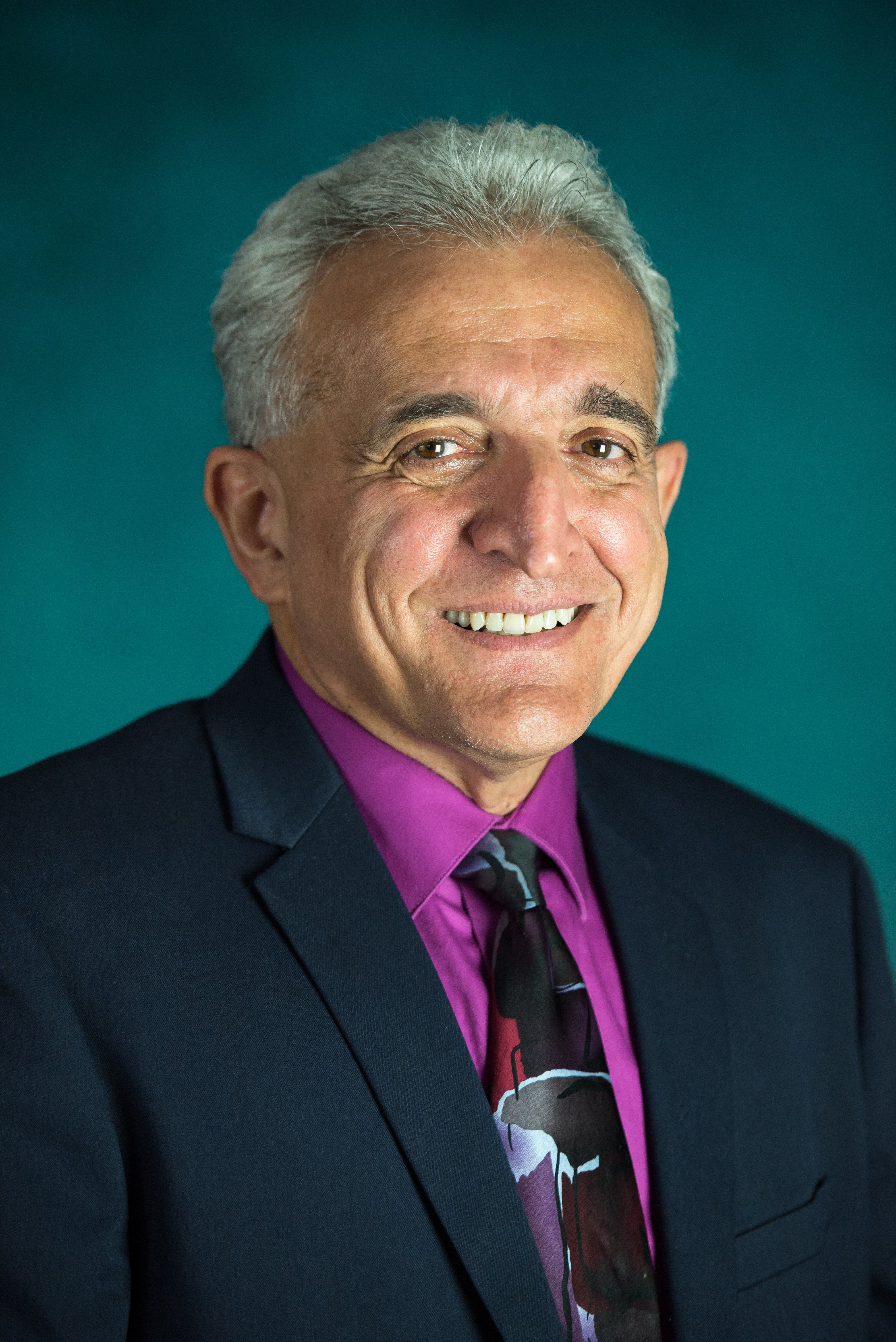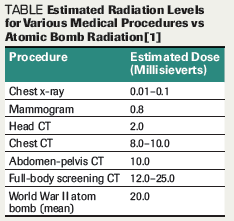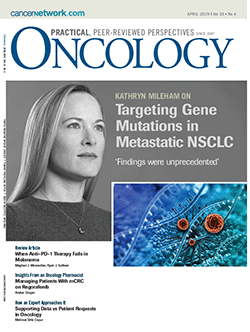Supporting Data vs Patient Requests in Oncology: When the Two Don’t Coincide
This article reviews patient requests and how they may be in contrast with guidelines, and provides recommendations from a community oncology practice perspective.
Oncology (Williston Park). 33(4):156-8.

Mehmet Sitki Copur, MD

Relationships between cancer patients and their oncologists flourish in a milieu of trust and goodwill. However, at times cancer patients may express strong preferences for medical tests, treatments, or other interventions that are not beneficial. Actively challenging these requests can be difficult and may threaten the patient–physician relationship. However, failure to discuss why specific diagnostic or therapeutic interventions are not appropriate may be harmful to the patient and lead to inefficient use or overuse of healthcare resources. It is therefore crucial that oncologists steer patients away from unnecessary or harmful tests and procedures in an eloquent and respectful manner. In addition to utilizing individualized clinical reasoning, clinicians can also consult clinical practice guidelines to help respond to these requests using an external source of authority. However, guidelines may not always be sufficient. This article reviews this topic and provides recommendations from a community oncology practice perspective.
Introduction
From diagnostic work-up and treatment through surveillance, cancer patients’ requests can influence management decisions. These requests may not always represent the oncologist’s first choice or be in line with established clinical guidelines. Practicing oncologists may have concerns about rejecting patient requests, in part because of the perception that rejection may lower patient satisfaction. Several studies, mostly in primary care, have reported rather conflicting results. While some found that refusal of patient requests was associated with lower patient satisfaction,[1-4] no such association was found in others.[5] Physicians have an ethical duty to maximize patient benefit and avoid doing harm. Refusal of patient requests may seem to conflict with respecting patient autonomy.[6,7] While consumer empowerment in healthcare is increasingly emphasized, physicians frequently find themselves as the target of cost-control measures and, as such, are being asked to restrain the use of expensive but marginally beneficial treatments.
Reported Data on Patient Requests
General medicine–specific data
Published data show that patient requests for clinical services are both inescapable and influential, and are more common in the primary care vs specialty medicine setting. Surveys show that 40% to 66% of physicians report having received patient demands or requests for tests or treatments, and 25% to 53% have complied at least once with such requests.[8-11] One quantitative study, which relied on the researchers’ interpretation of audiotapes, found the frequency of patient demands for a test, new prescription, or referral to be 23%.[12] In another study, physicians’ approaches to denying requests for antidepressants were classified into patient perspective–based, biomedically based, or outright rejection as the primary denial reason. Higher visit satisfaction was reported by patients when the physician used a patient perspective–based strategy in order to refuse requests.[13]
Unmet requests may affect the physician–patient relationship, and physicians must learn to manage these requests in a reverent and clinically meaningful fashion. In a vignette-based study, researchers found that physician communication style, namely shared decision making, led to better evaluations of care in response to denial of a direct-to-consumer advertising-based request.[14] In another study examining physician responses to patient requests for an expensive unindicated test, a few physicians ordered the test, but most referred the patient to a specialist.[15] The higher volume of patient requests in primary care vs specialty care may partly be attributed to the fact that scope of practice in primary care is broader, and primary care providers typically evaluate more conditions per visit than do specialty providers.
Oncology-specific data
Most of the reported data on patient requests comes from research conducted in non-oncology settings. A cancer diagnosis is almost always psychologically stressful, with chronic and disruptive changes to patients’ daily living. Cancer patients may spend a lot of their time feeling unhealthy, and the mental and physical tolls on them can be enormous. Due to the seriousness of their disease, the life-or-death motivation to find effective treatments, and the extensive information available on the internet, many cancer patients ask for high-cost and/or inappropriate imaging; genomic testing; and surgical, medical, or radiation therapies. They may request interventions based on media publicity about new research findings, sometimes even before their oncologists learn about them. Internet sources of clinical information increasingly empower cancer patients to make medical judgments independent of consultations with their oncologists. Furthermore, widespread direct-to-consumer advertising may prompt patients to ask for specific treatments that may not be appropriate. Fortunately, requests for nonbeneficial interventions can often be addressed by applying established practice guidelines. When guidelines recommend against a requested intervention, oncologists can respond to patients using external sources of authority and depersonalize potential conflict with the patient.
Understanding and addressing the patient’s role in making healthcare-related decisions as they relate to cancer care are crucial. Interestingly, however, surprisingly limited published data exist on this topic in the oncology practice setting. In one of these rare studies, Gogineni et al reported an 8.7% rate of patient demand or request.[16] Of 5,050 oncology patient–clinician encounters involving 3,624 patients and 60 clinicians, a total of 440 patients requested or demanded a medical intervention. Oncology providers felt that 365 of these requests (83.0%) were clinically appropriate and thus complied with them. In only 50 of the 440 encounters (11.4%), the patient request or demand was deemed not clinically appropriate. However, 7 of these inappropriate demands or requests (14%) were granted, thus bringing the total compliance rate with inappropriate demands or requests to only 0.14% (7 of 5,050 total encounters). Of the 440 patient demands, 216 (49.1%) were for imaging studies; 68 (15.5%) were for palliative treatments, excluding chemotherapy or radiation; and 60 (13.6%) were for laboratory tests. In a multivariate model, having lung or head and neck cancer, receiving active treatments, and having a fair- or poor-quality patient–clinician relationship were associated with an increased likelihood of patient demands or requests (P < .01).[16] Considering the high stakes of a cancer diagnosis and patients’ deep dependence on their oncologists, a nearly 9% rate of patient requests as reported here seems low. This may partly be due to the use of physician recall measure (up to 4 hours after the visit) utilized in this study, as well as the location of the study in large, tertiary, city-based cancer centers, which offer a full slate of aggressive diagnostic and therapeutic services.
Meaningful Use of Healthcare Resources
As science progresses and the ability to provide improved treatments increases,[17] so does the cost of cancer care. Despite best efforts to improve efficiency, the effectiveness of therapy can be overwhelmed by the limited availability of clinical services and the pressure to provide them. Responsibly managing healthcare resources is critical and may require oncologists to oppose requests for nonbeneficial interventions. Several efforts to reduce such interventions have been initiated, such as the American Society of Clinical Oncology’s Choosing Wisely® campaign, which identified the top 5-and, subsequently, the top 10-tests that should never be ordered.[18-20]
On an individual level, stewardship is facilitated by evidence-based data. In some situations, however, available evidence may not provide a clear course. In an era of increased constraints on healthcare systems and practitioners, learning to say “no” to patient requests will become more important and more challenging.
How I Handle Nonindicated/Nonbeneficial Patient Requests
During my 23 years in community oncology practice, I have encountered my fair share of patient requests/demands that were not supported by the guidelines, not medically indicated, and, at times, that were even potentially harmful. In these situations, I first explore whether I might be missing any medical indications. Next, I try to understand why the patient is making the request. What is the driving force behind it? Once I figure that out, I take the time to provide education to correct or clarify any misunderstanding or misinformation the patient may have.
Before I decline a request, I make sure I take the necessary time to explain the reasoning behind my decision so that s/he does not suspect that I am merely ignoring her/his concerns, or acting in the interest of cost containment, rather than in his/her best interest. Most of the time, this approach is more than enough and resolves the conflict. However, the major hurdle with this approach, as you may predict, is time constraints, which we all have in our very busy and demanding daily practice. To get around this challenge, I frequently find myself making additional time during after hours, once my active immediate patient care duties have been completed for the day.
Cancer patients are special people. They are brave. They are rational. They are smart. They are resilient. Most of the time, they do have a special and cordial relationship with their oncologists. In my experience, cancer patients prove to be incredibly appreciative and trusting when their oncologist takes the time to build a confidence level with them that makes them realize they are truly and genuinely cared for. It just takes some extra time, empathy, and understanding.
Financial Disclosure:Dr. Copur has no significant financial interest in or other relationship with the manufacturer of any product or provider of any service mentioned in this article.
PERSPECTIVE

Utilizing Tangible Examples and Third-Party Data to Back Up Saying "No"
Simon Tchekmedyian, MD, FACP
Patients’ requests for tests are frequent in oncology practice, and Dr. Copur presents much-needed information on this often neglected topic in this article. The paper indicates that almost half (49.1%) of demands for tests were for imaging tests. One aspect of imaging tests that is often overlooked by patients is radiation exposure: I have found that patients grasp the importance of it when they compare the exposure with a more understandable and tangible reference. That is why the Wall Street Journal article’s summary of radiation levels for various medical procedures (Table), with a striking reference to atomic bomb exposure, is particularly relevant.[1] When seen in this light, patients requesting repeated unnecessary CT scanning often find a more balanced view of the pros and cons of testing.
Exposure to intravenous contrast material can cause harm, such as kidney or lung damage resulting from iodine contrast, but other contrast materials may also be problematic. In 2017, the US Food and Drug Administration addressed the concern of such agents remaining in patients’ bodies for months to years after receiving scans by requiring a new class warning and other safety measures for all gadolinium-based contrast agents.[2]

Routine surveillance scans following cancer treatment are a frequent subject of discussion at oncology patient follow-up visits, and tools such as the National Comprehensive Cancer Network guidelines are helpful in following a reasonable plan.[3] It is worth remembering the experience of the National Surgical Adjuvant Breast and Bowel Project, which utilized routine repeat bone scans after breast cancer treatment. Their protocols required bone scans every 6 months for 3 years postoperatively and then yearly thereafter. The resulting data revealed that these tests were not helpful, and protocols subsequently required scans only as indicated by symptoms.[4]
Objective third-party, science-based published references that are available to patients can be powerful informational tools. In oncology practice, it is important to always balance the benefits and risks of interventions. In my experience, patient satisfaction is highest when patients are given helpful information that protects them from unnecessary harm, anxiety, and expenses.
Financial Disclosure:Dr. Tchekmedyian has no significant financial interest in the manufacturer of any product or provider of any service mentioned in this article.
Dr. Tchekmedyian is a Hematologist/Oncologist at Pacific Shores Medical Group in Long Beach, Irvine, and Huntington Beach, California.
References:
1. Kravitz RL, Bell RA, Azari R, et al. Request fulfillment in office practice: antecedents and relationship to outcomes. Med Care. 2002;40:38-51.
2. Uhlmann RF, Carter WB, Inui TS. Fulfillment of patient requests in a general medicine clinic. Am J Public Health. 1984;74:257-8.
3. Jackson JL, Kroenke K. The effect of unmet expectations among adults presenting with physical symptoms. Ann Intern Med. 2001;134:889-97.
4. Jackson JL, Chamberlin J, Kroenke K. Predictors of patient satisfaction. Soc Sci Med. 2001;52:609-20.
5. Mangione-Smith R, McGlynn EA, Elliott MN, et al. The relationship between perceived parental expectations and pediatrician antimicrobial prescribing behavior. Pediatrics. 1999;103:711-8.
6. Whitney SN, McCullough LB. Physicians’ silent decisions: because patient autonomy does not always come first. AM J Bioethics. 2007;7:33-8.
7. Schiff GD, Galanter WL. Promoting more conservative prescribing. JAMA. 2009;301:865-7.
8. Campbell EG, Pham-Kanter G, Vogeli C, Iezzoni LI. Physician acquiescence to patient demands for brand-name drugs: results of a national survey of physicians. JAMA Intern Med. 2013;173:237-9.
9. M’ikanatha NM, Julian KG, Kunselman AR, et al. Patients’ request for and emergency physicians’ prescription of antimicrobial prophylaxis for anthrax during the 2001 bioterrorism-related outbreak. BMC Public Health. 2005;5:2.
10. Rasmussen KG, Lineberry TW. Patients who inappropriately demand electroconvulsive therapy. J ECT. 2007;23:109-13.
11. Kravitz RL, Epstein RM, Feldman MD, et al. Influence of patients’ requests for direct-to-consumer advertised antidepressants: a randomized controlled trial. JAMA. 2005;293:1995-2002.
12. Kravitz RL, Bell RA, Azari R, et al. Direct observation of requests for clinical services in office practice: what do patients want and do they get it? Arch Intern Med. 2003;163:1673-81.
13. Paterniti DA, Fancher TL, Cipri CS, et al. Getting to “no”: strategies primary care physicians use to deny patient requests. Arch Intern Med. 2010;170:381-8.
14. Shah MB, Bentley JP, McCaffrey DJ 3rd. Evaluations of care by adults following a denial of an advertisement-related prescription drug request: the role of expectations, symptom severity, and physician communication style. Soc Sci Med. 2006;62:888-99.
15. Gallagher TH, Lo B, Chesney M, Christensen K. How do physicians respond to patient’s requests for costly, unindicated services? J Gen Intern Med. 1997;12:663-8.
16. Gogineni K, Shuman KL, Chinn D, et al. Patient demands and requests for cancer tests and treatments. JAMA Oncol. 2015;1:33-9.
17. Reuben DB. Miracles, choices, and justice: tragedy of the future commons. JAMA. 2010;304:467-8.
18. Schnipper LE, Smith TJ, Raghavan D, et al. American Society of Clinical Oncology identifies five key opportunities to improve care and reduce costs: the top five list for oncology. J Clin Oncol. 2012;30:1715-24.
19. Choosing Wisely. American Society of Clinical Oncology: 10 things physicians and patients should question, 2013. http://www.choosingwisely.org/doctor-patient-lists/american-society-of-clinical-oncology. Accessed March 25, 2019.
20. Mitera G, Earle C, Latosinsky S, et al. Choosing Wisely Canada cancer list: ten low-value or harmful practices that should be avoided in cancer care. J Oncol Pract. 2015;11(3):e296-303.

Oncology Peer Review On-The-Go: COVID-19, Cancer, and the Potential of mRNA Vaccines
March 30th 2021Mehmet Sitki Copur, MD, discussed his article in the Journal ONCOLOGY® focusing on COVID-19, messenger RNA vaccines, and the excitement surrounding its integration into the future of cancer treatment.